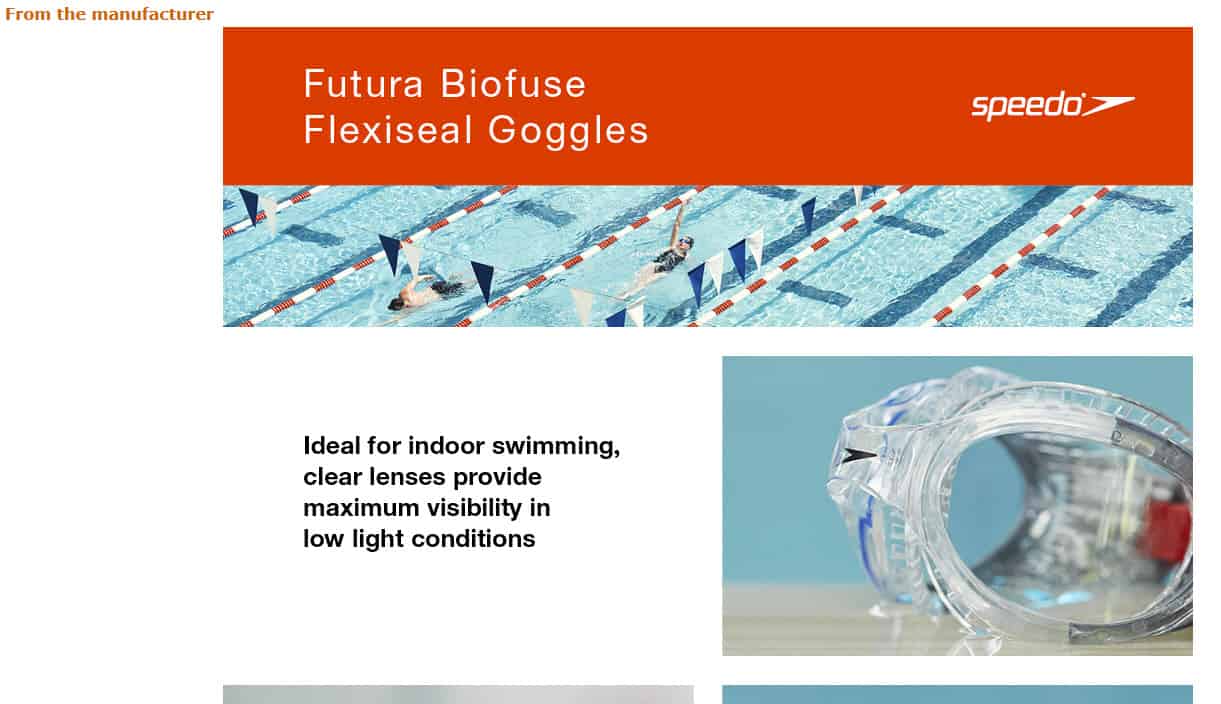This time Ian speaks with PureFluent client Jessica Shaw, Shopper Marketing Executive for Pentland Brands Limited, a global brand management company involved in the sports, outdoor and fashion markets. Jessica’s role involves working with Amazon to ensure that their brands are visible and provide shoppers with the best possible experience of the brands they sell on Amazon, highlighted and targeted precisely.
Ian:Many readers will be familiar with your brands but won’t be familiar with the Pentland name, so can you tell me a bit about the company, its origins and the brands it represents?
Jessica:Pentland was originally the Liverpool Shoe Company, which was founded in 1914 by Berko and Minnie Rubin, the grandparents of our current Chair, Andy Rubin. It began as a small wholesale shoe business and gradually expanded into manufacturing footwear. It’s a family business spanning four generations. We own a number of brands including Speedo, Berghaus, Canterbury, Endura, ellesse, Boxfresh, KangaRoos and Red or Dead, and we’re also the UK licensee for Kickers.
Ian:That’s an impressive portfolio of brands that you just described and I imagine that the one most people will immediately recognise is Speedo. How long has Speedo been in the portfolio and did Pentland purchase it outright?
Jessica:Speedo became part of the Pentland family in 1991. The head office is based in Nottingham and Speedo is sold in 180 countries worldwide. The brand itself was established in Australia in 1928.
Ian:Where does Speedo sit in your roster of brands, is it your biggest?
Jessica:Speedo is sold in more countries globally than any of our other brands. As a result, it is our biggest brand in terms of reach and popularity. Speedo is synonymous with swimming and is a globally recognisable brand.
Ian:A lot of your brands are associated with sport or the outdoors, does that give you advantages in product development and marketing?
Jessica:Having a number of brands across the sports and outdoors categories allows us to use each brand’s strengths. For example, our expertise in fabric technology in Endura aligns itself with ground-breaking technology in Speedo’s Fastskin range. We can utilise each of the brands specialities to make our products world class across the board. Working together ensures continual improvements and efficiency.
Ian:Tell me a bit about yourself and your role as Shopper Marketing Executive with Pentland, and your commercial background?
Jessica:I started my career at Shop Direct in Liverpool for two years, and I’ve been with Pentland for two years as well. I was in buying previously and I think that both sales and brand building relies a lot more on insights than buying did or does. Buying is a lot more emotional and while there is analytics behind buying insofar as knowing what sells I think buying comes a lot more from the heart. The backbone of Pentland’s business is analytics and data, especially working with Amazon. You can’t work with Amazon if you’re not willing to drill down into details and the data as they’re a data-led business and they speak in data, which is the biggest takeaway I’ve had from working with them.
We can utilise each of the brands specialities to make our products world class across the brand. Working together ensures continual improvements and efficiency.
I work within Pentland Brands’ Customer team, and I work specifically with Amazon across a number of markets in the Shopper Marketing arm of the team. I work to ensure that all our products across all our brands are represented in the right way on Amazon so that shoppers have the best possible shopping experience. This includes images that display our products and the written content that supports it, which is obviously where PureFluent comes in, through to Amazon brand stores and marketing campaigns. Amazon can be quite a restricted theatre sometimes in trying to make your brands look as good as possible but we’ve got a really great relationship with them and we have quite a lot of tools at our disposal to make our products look amazing.
We have to develop with Amazon; I don‘t think we could work with them and do our jobs if we didn’t have data analysts on our team. It’s really interesting working with Amazon and seeing how they develop and it’s a really exciting partnership to have – I can’t wait to see what they come out with next year!
Ian:You may be biased as this is your role but Is Amazon your most important online channel?
Jessica:We have a number of important routes to market, and ultimately our aim is that regardless of where shoppers shop they have a brilliant experience. Amazon sits within our Strategic Customers division because there are so many brands on the platform, so while it’s a strategic customer for us I wouldn’t say that it’s the most important because we have a plethora of routes to market. Whether it’s online or bricks & mortar, we want customers who buy Pentland products to have the best possible experience.
Ian:Are there other online channels that are important for Pentland’s brands, perhaps specifically to do with your sporting brands?
Jessica:Obviously there are a lot of giants that have online department stores for example, and bricks & mortar retailers that have very successful online businesses and we do business with all of those, but there aren’t a huge number of customers working with the Strategic Customers team.
Google isn’t being used as a shopping tool, it’s being used as an answering tool and the answers it’s giving are being put into Amazon.
Ian:Moving from specific retailers on to markets, what are Pentland’s main non-English markets? How do you decide which markets to focus on?
Jessica:Outside the UK and US we have a bit of a focus on Europe at the moment, especially Germany which is the big one for us in 2020.
We have two data analysts that are part of our team who analyse all of the data and insights that they can access on our behalf, and they develop that strategy for us. From an Amazon perspective that data outlined Germany as the biggest potential and that that’s what will be focussing on next year.
Ian:How have you seen customer experience and expectations evolving with Amazon in the time that you’ve been working with them?
Jessica:Interestingly, more people start their shopping journeys on Amazon now than on Google, which is a huge, huge shift. People ask Google questions such as “why can’t I sleep?”, but on Amazon you’ll type in ‘sleeping tablets’, so people are telling Amazon the answer. Google isn’t being used as a shopping tool, it’s being used as an answering tool and the answers it’s giving are being put into Amazon.
Amazon’s developed a lot just in the past few years, with people expecting next day delivery, extra customer service and the easiest shopping experience possible, highlighted by ‘one click buying’, their USP and now you can even shop through voice command! We have to keep up with the fact that people are asking Alexa to buy them a football and therefore we aim to to be ‘Amazon’s Choice’ for people buying a football, because people aren’t going to listen to Alexa reel off three pages of products.
Alexa was asked last year to “put the Christmas lights on” 10s of millions of times, so questions are asked in enormous numbers especially around key shopping periods. The way that people are buying on Amazon has changed so much, even since I started with the team. Insight tells us that in the next couple of years, voice will become 50% of their search.
You can’t work with Amazon if you’re not willing to drill down into details and the data as they’re a data-led business and they speak in data, which is the biggest takeaway I’ve had from working with them.
There are new build homes now that have Alexa installed, which feels like something out of a science fiction movie – Alexa is changing the shopping landscape incredibly. Our job now is to make the ease of shopping so great that it comes down to “Alexa find that product on the platform” – if you’d told me that’s what was going to happen even three years ago I would have responded that that’s not going to happen, people are never going to shop via Alexa.
Ian:I’m not an Alexa user but in terms of buying clothes specifically I’m more reticent about buying online because I’m very conscious of clothes fitting well so I’m pretty insistent about trying things on.
Jessica:In terms of overcoming that resistance around trying things on, Amazon have now released an Alexa which has a camera in it, this allows you to select clothes which are placed over your body like a paper doll, essentially allowing you to try the clothes on. I believe this is called Alexa Show and when we were told about it last January I thought “they do think of everything” – they’re really one step ahead of anything you might think of as an issue. For people that are still using computers or mobiles we provide size guides and Amazon offer a simple and easy returns option.
We’re spending a lot more time on search optimisation for our translated content so it’s relevant for global shoppers. Just because some copy works in the UK, direct translations might not work in France or Germany.
Ian:How are these changing expectations affecting your approach to translation?
Jess:Shopper needs change and so does the way that people shop, so we look at the way our shoppers search for products and the way that varies between markets. We’re spending a lot more time on search optimisation for our translated content so it’s relevant for global shoppers. Just because some copy works in the UK, direct translations might not work in France or Germany.
We had a Berghaus advert which basically said “The most exercise you’ve done today – pressing ‘next episode’ on Netflix”, and “Are you upset that there are no avocados at the farmer’s market?”, the idea being that it’s time for you to get over all your millennial problems and get outside, and we used a picture of the glorious, sunny hills you should be on. When this was pitched to Germany they didn’t understand it, asking why anyone would be upset if there are no avocados at the farmer’s market, why wouldn’t they just get something else? The idea of avocado and poached egg for brunch at the weekend is a very UK thing, so Germans understandably didn’t get it. The intricacies and the humour don’t always translate to other markets. It cannot be ‘cut and paste’.
Berghaus “Time to Get Out” Campaign
Ian:On something of the more technical side of Amazon, is their A+/B+/EBC content important for the customer experience, and how do you ensure this content is effective?
Jessica:This content allows the shopper to learn more about a product before deciding to purchase and it also creates authenticity and sharpens the experience, getting the brand across to the shopper on Amazon. Personally, when I’m purchasing on Amazon, seeing the A+ content, it provides authenticity, it’s educational and provides me confidence to buy. Amazon can sometimes be a daunting place to shop and this makes it easier. Amazon like us to have it and creating it is a good part of my job, it gives us a bit more freedom and we work really closely with the brands in creating it.
Not all shoppers look at the bullet points so they may be missing some of the features and benefits and this is a good way to highlight those in a more creative format. 95% of all Amazon shoppers look at every image, this means the B+ feature is additional images with the features and benefits laid over the image. This supports conversion to purchase.
Example of Amazon A+ Content
We had an overhaul of our content strategy in the last year, reviewing all our A+/B+ content, creating new brand stores, re-translating everything etc, so it’s difficult to drill down and determine the single most effective content because it was all done in a similar timeframe. We work very closely with the brand teams and we utilise the brand marketing ideas that they’ve spent ages researching, having gone into the markets and spoken to our shoppers. They do all the legwork and produce beautiful images for us, and then it’s up to me and my colleague Louise to determine how we use these best for Amazon. We have an internal creative agency who bridge the gap between what we want for Amazon and what the brand have created, with the agency in the middle pulling it together, which is a really good working relationship.
Ian:You’ve touched on this in a few of your answers, but what approaches do you take to ensure that shoppers find your products on Amazon?
Jessica:Rule #1 with Amazon is winning search and making products discoverable and we have a number of tools that we utilise to do this. Two of our key tactics lie around search, and we use Amazon advertising which allows you to use certain keywords to bring forward your products, which works on cost per click. The other way we ensure that shoppers find our products is to use the right keywords, and PureFluent have helped us with this by translating all our Speedo keywords. When you set up a product on Amazon you have to put keywords behind it which are called organic keywords; we’re not using cost per click with this.
Ian:Do you follow the same approaches for English and non-English territories?
Jessica:We do when it comes to search but obviously the big difference will be that we’re using the same keywords that we use in the UK and translating and applying them in France, Germany or other markets. We work with PureFluent and are able to gauge how many people are searching for those search terms and then rank them by relevance, and we then translate and make them relevant in a particular market. It’s much more tailored doing it this way, rather than just using the exact same keywords for Speedo for every market. This is hugely important for properly servicing our products in markets where we may not have as much brand recognition and it’s a major benefit of working with PureFluent.








Very interesting interview! The core statement ‘The intricacies and the humour don’t always translate to other markets. It cannot be ‘cut and paste’.’ puts it in a nutshell. That´s what makes my daily work so exciting and why I am passionate about it.
Thanks for the comment Susanne!